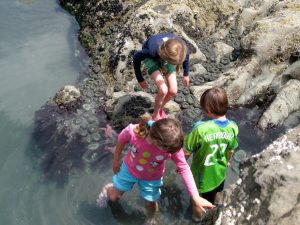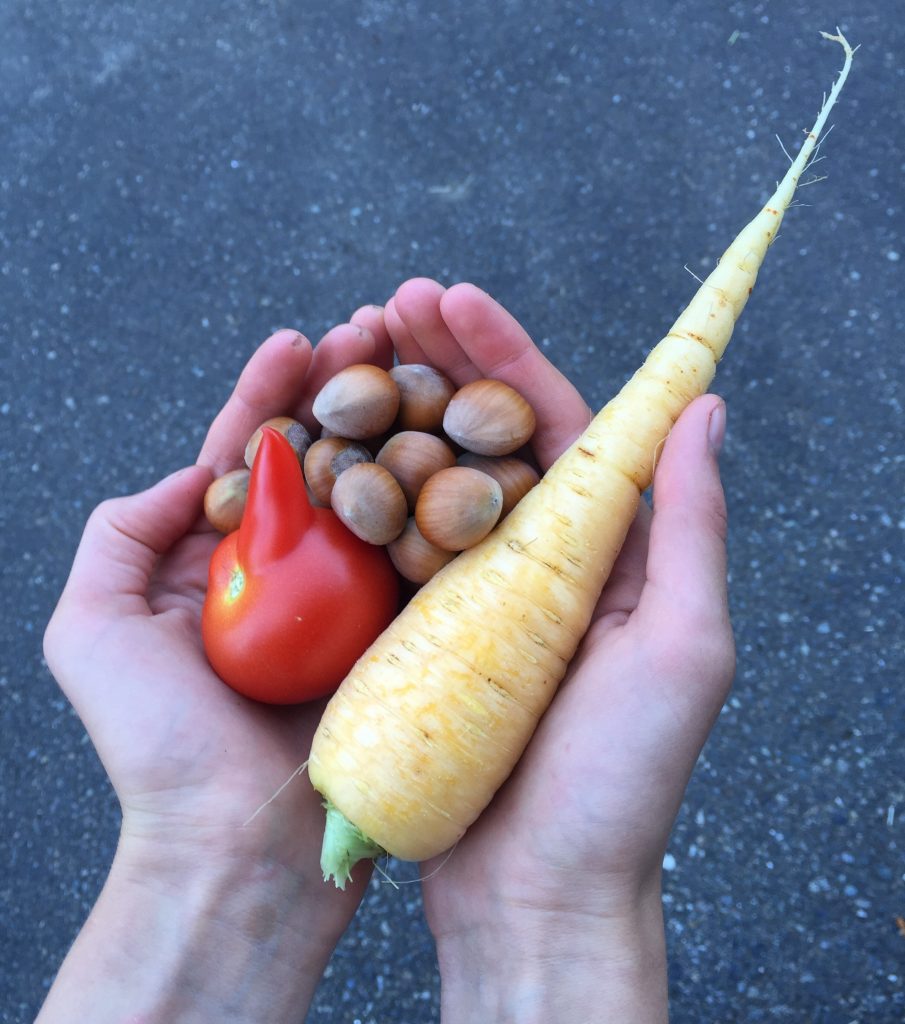Reciprocity is the practice of exchanging things with others for mutual benefit, whereas a gift is a thing given willingly to someone without payment. Stewardship is a social contract that exists beyond currency. I remember a mentor who once suggested that I should not reject gifts, as it can also be selfish to denying another the pleasures of generosity. Somewhere in all this gift and exchange and responsibility is a kind of nourishment that comes without financial currency. Is a nourishment that comes from belonging to a place and to a people that is larger than the self. This domain of belonging and relationship is what I would like to explore with restoration camping. Our earth clearly needs us to do this work. The landscapes that need restorations are the ones we drive by and buy coffee in on the way to our national parks. Can restoration camping attract people for whom relationship with nature has been sold as the consumption of epic views?
 Each person comes to the campfire with different purposes and needs. By understanding these purposes and needs we can arrange for everyone to be nourished by the relationship. Each may also bring fears to the campfire. We can tend to each others fears with compassion and without shame. To design restoration camping we need to deeply understand our community to weave a network of mutual benefit.
Each person comes to the campfire with different purposes and needs. By understanding these purposes and needs we can arrange for everyone to be nourished by the relationship. Each may also bring fears to the campfire. We can tend to each others fears with compassion and without shame. To design restoration camping we need to deeply understand our community to weave a network of mutual benefit.
In marketing, we profile different “market segments”, and use that knowledge to make sales. We must be even more thoughtful in creating a restoration camping system, with attention to building more durable relationships then those of the open market. I am not convinced that we can restore and tend the land as an entertainment business. As I speculate about each member of our potential community, I use the term “steward” to identify people with a deeper relationship with a particular camp or watershed, while “campers” are more likely to come and go. There is a gradient of responsibility and reward, from steward to camper, that needs to be explored further.
Our Cast of Characters:
- Landowner Host – some owner or manager of land must be willing to invite a community of nomadic people they barely know to come live on their land and do work. Their greatest fear is that these strangers will be more trouble then they are worth, or even abuse the offer of hospitality. Our host however is interested because they are enlivened by a vision of abundance and restoration, but doesn’t have the resources to realize that vision. Land Trusts struggle to maintain stewardship of their lands. Private landowners usually know little about streams. This guild offers a way to achieve a vision, but is asking for something in return. That reciprocity needs to be clear. Many conservation landowners only see human residence as a source of injury, and may believe their conservation work depends on removing people from their land, and will need examples of regenerative work.
- Professional Steward – At the heart of restoration camping are professionals who volunteer to design and lead projects and run recurring programs. These are likely people with experience, but who are willing to serve and teach with only non-monetary compensation. They want to see meaningful stewardship over time and want to be respected for their contribution. Because they value their experience, and see a long term potential, they want to see their investment in a piece of land protected, and want some kind of assurance of a long term relationship with the land. These individuals are likely to be government professionals or owners of established businesses: scientists, managers, educators, landscapers, and farmers.
- Watershed Partner – Also vital to the

In the Scatter Creek Watershed the Center for Natural Lands Management provides leadership in dry prairie restoration and has a skilled staff that can design and lead work, and depends on volunteers. camp are individuals whose work in the watershed is so closely aligned with the purposes of the guild, that they can easily play a leadership role in supporting projects as part of their professional work. Perhaps they do watershed education, regional planning, or restoration project development already, and the camp is a cadre of trained and equipped volunteers–a dream come true for a local team. These include land trusts, conservation districts, tribes, counties, and NGOs.
- Camp Steward – Once a camp becomes established, I have imagined that some individual will need to devote their working life to managing a camp: tending reservations and schedules, answering questions, tending camp infrastructure, maintaining relationships. This steward would likely be young but with diverse experience, and proven reliability. The camp could serve as a stepping stone into other professional work, or could be a long term commitment. The camp ultimately needs to give the camp steward a living wage and benefits to attract and retain people. Annual membership dues are the unique component of the restoration camping system that would stabilize this persons livelihood. At the start, this function will be provided by professional stewards.
- Producer Steward – Another group that might be attracted to camp, are people who are able to take a harvest from lands under stewardship, as part of their livelihood. In many cases, harvest can enrich an ecosystem, or create niches to increase biodiversity. This might include woodworkers, herbalists, basket makers, florists, seed collectors, or restoration shops–people for whom an abundant landscape is a source of raw materials. Part of their work may be the cultivation of collecting grounds, which they would require some assurance on long term tenure.

Can restoration camps attract people in a world where relationship with nature is sold as a process of consuming epic landscapes? - Professional Educator – Among the professionals involved in the camp will individuals who make a living by teaching skills. These folks need to sustain themselves by finding students who pay for knowledge. The camp can provide a unique venue to run programs, and the guild provides a network for promoting their work. They are concerned about giving away too much of their labor for free. They need a reliable system and location that serves their educational goals, and are used to paying for a nightly group camping fee that they incorporate into their program costs.
- Young Camper – College students in natural sciences and design, and other life-long learners may be attracted to the camp as a place to build knowledge and skills. They are likely looking for meaningful and organized learning opportunities. They might hope that camp work leads to employment or mentorship, or at least an opportunity to test new skills. Young campers may want to socialize with other people their age. There are many young travelers that use systems like WWOOFing or Workaway.
- Professional Camper – Some professionals may not want the burdens of the steward, but are looking for enrichment among peers. They will be disappointed if there is nothing new to be learned, or if camp projects are low quality. Camping serves as a retreat among peers, and could be a venue for professional groups to meet. Landowners could benefit from groups that use the camp as a case study for professional development.
- Recreational Camper – Most people will come restoration camping looking for a social environment for fun and learning. They will want space and free time, a beautiful location, a body of water, and easy socialization with interesting people. Overtime they may return in another role. These may be fishers, hunters, nature lovers, or outdoor fitness enthusiasts. Recreational campers might come into the guild through a purely commercial doorway, like HipCamp or AirBnB.

For a restoration camp to be attractive to families there must be areas where children can explore with minimal constraint. - Family Campers – This groups deserves special mention, because they have special desires and needs that revolve around their children. They want a safe and loving environment, preferably with childcare opportunities. The camp should be reliable, well organized, and not demanding, with activities that suit a range of ages. Kids want to run free and explore.
- Landowner Neighbor – As the camp can demonstrate its work, and connects to the local community through social events and watershed assessment work, local landowners may be willing to invite the camp to work on their land. The camp will need to overcome mistrust by being reliable and open handed. Through shared stewardship, the neighbor develops a deeper relationship with their land, and can realize goals they cannot reach alone.
Each of these segments of our community is currently out there somewhere in our social landscape. We need to weave an honest story of how they could belong and be nourished by restoration camping. The abilities of one group, feed the needs of another. This interaction is what makes the camp live.


